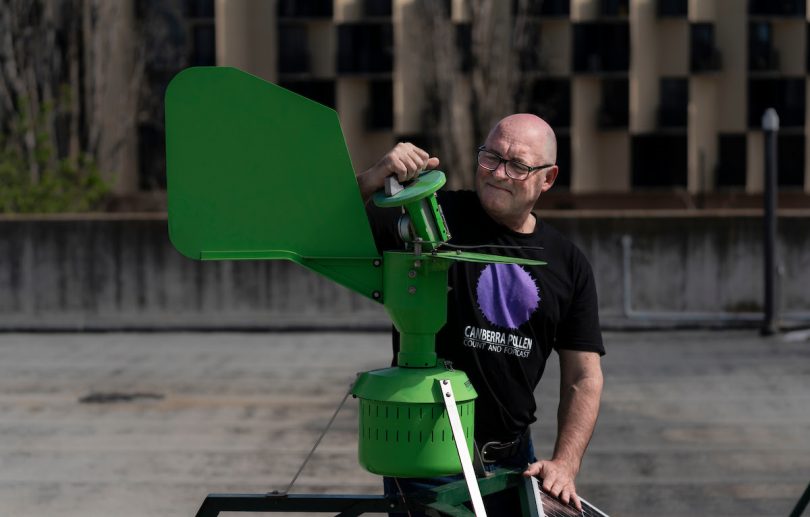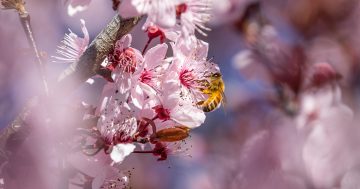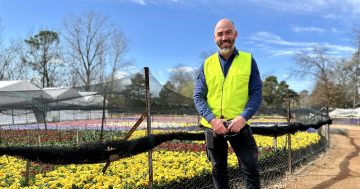
A stream of pollen on the foreshore of Lake Burley Griffin. Photo: Simon Haberle.
Just when Canberrans might have thought they were out of the woods when it comes to hayfever, chances are the itchy eyes and stuffy noses came back with a vengeance last week.
If you’re a hayfever sufferer, the bad news is there are two pollen seasons in the ACT.
The grass pollen season has been slow off the mark this year, with low levels recorded through the first two weeks of October. All that changed last week with grass pollen levels shooting up to high and extreme levels.
Last Friday (29 October), the ACT recorded the highest grass pollen count for the last 10 years.
The second pollen season – tree pollen season – generally runs between September and October, while the grasses give off their pesky pollen and dust from October through to December.
According to data collected by the local pollen monitoring website, Canberra Pollen, the tree pollen season broke records this year, starting up to 10 days earlier than in previous years.
Grass pollen levels suddenly shot up from 27 October, reaching new heights on 29 October when more than 200 grains per cubic metre of air were measured. This rough start is more than a week earlier than the first extreme grass pollen day recorded last year.

Professor Simon Haberle is predicting another bumper pollen season for Canberra. Photo: Jamie Kidston/ANU.
Australian National University (ANU) professor and leading pollen expert Simon Haberle runs the Canberra Pollen website and its associated app with the support of the ANU.
Professor Haberle says the slow start to this year’s grass pollen season is best explained by the cooler daily maximum temperatures in October (2 degrees Celsius cooler in 2021 than for the same time in 2020), coupled with high rainfall throughout winter and into spring.
Over the last 10 years of sample collection, 2020 also proved to be a record grass pollen season while levels were at their lowest in 2017.
“This year’s grass pollen season is most similar to that of 2014 when Canberra Pollen recorded a rapid rise in grass pollen around the end of October,” Professor Haberle says.
“2014 also saw a stretch of high and extreme grass pollen days recorded at the end of October, which may have contributed to a spike in asthma-related presentations to The Canberra Hospital on 26 October.”
Professor Haberle says Canberra Pollen will continue to monitor the daily grass pollen count to see if the season unfolds as it did in 2014, or if it matches or exceeds that recorded in 2020.
“Either way, it seems we are in for another bumper year of grass pollen.”
This is bad news for Australia’s ‘allergy capital’ which already suffered through three extreme tree pollen counts in early August.
One in three people in Canberra suffers from some form of allergic rhinitis, costing the local economy at least $170 million a year due to its impact on health and productivity.
Professor Haberle, who operates under the moniker That Pollen Guy on social media, says he wants to “clear the air” for allergy sufferers by mapping and tracking pollen risks across Canberra.
The maps consider garden plants and street plants to depict which parts of Canberra may be worse for allergy sufferers.
To download the app, search Canberra Pollen Count.

















